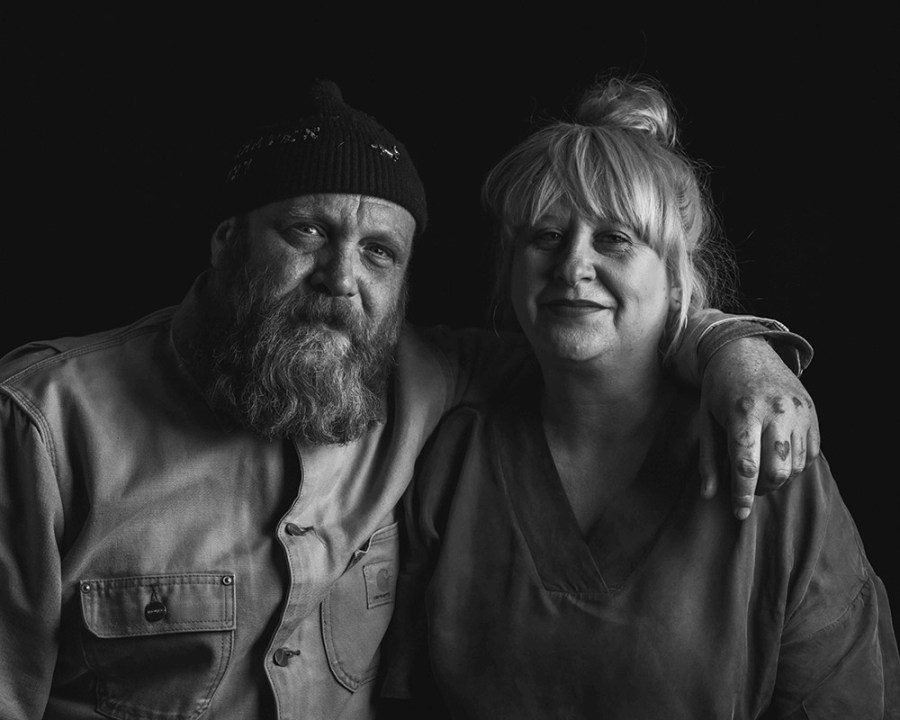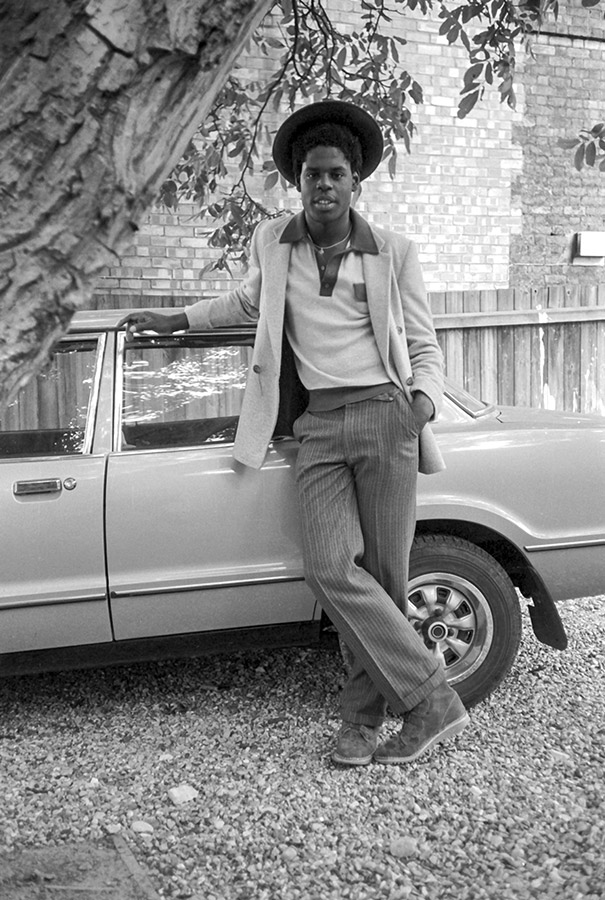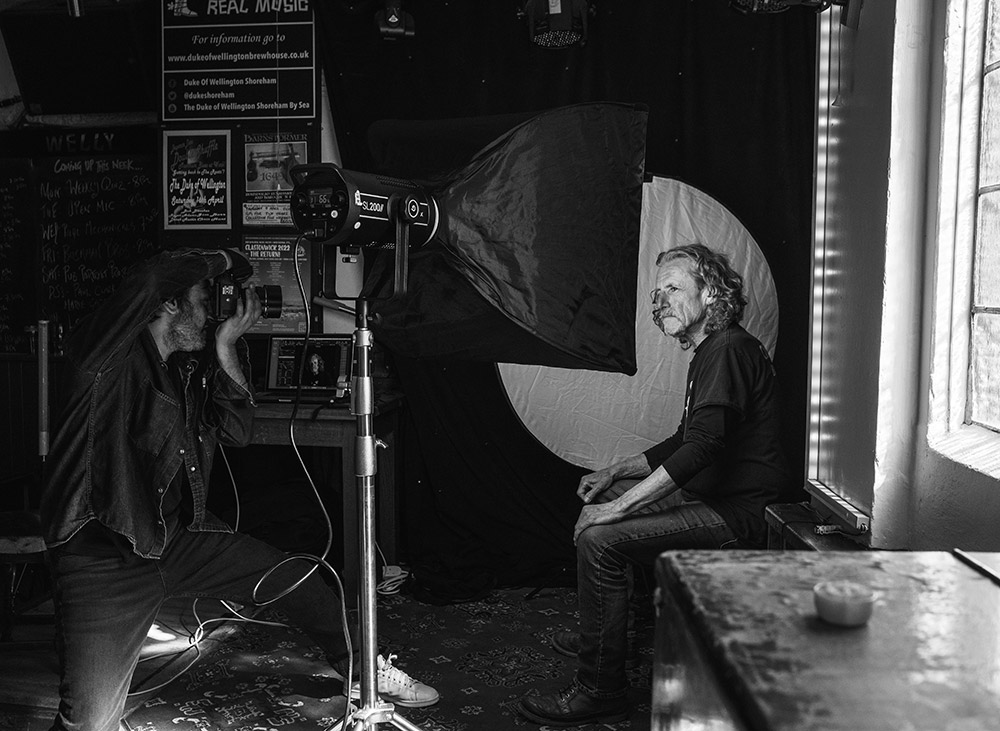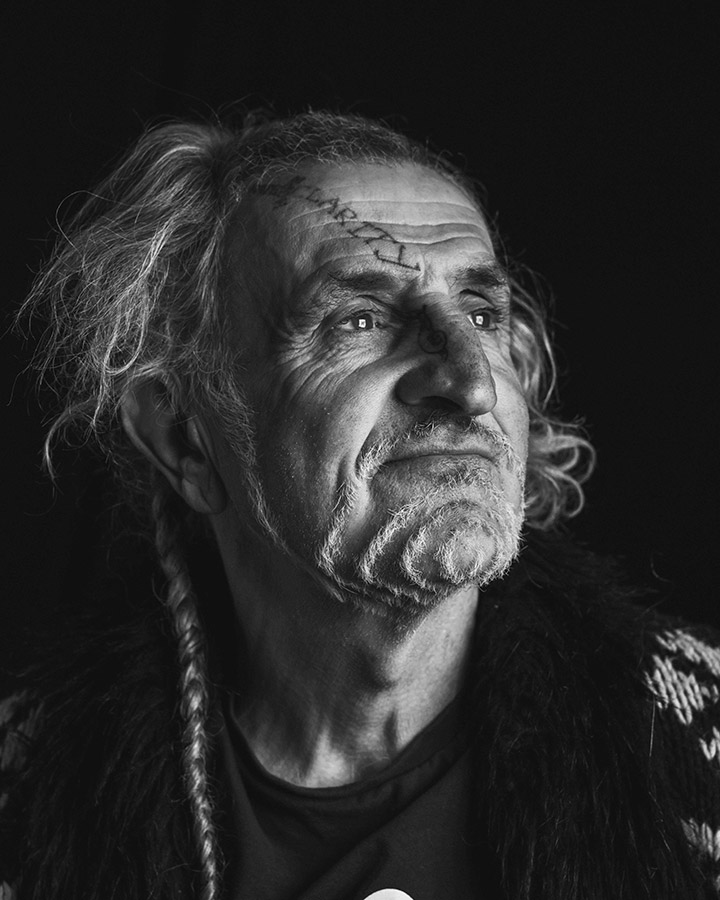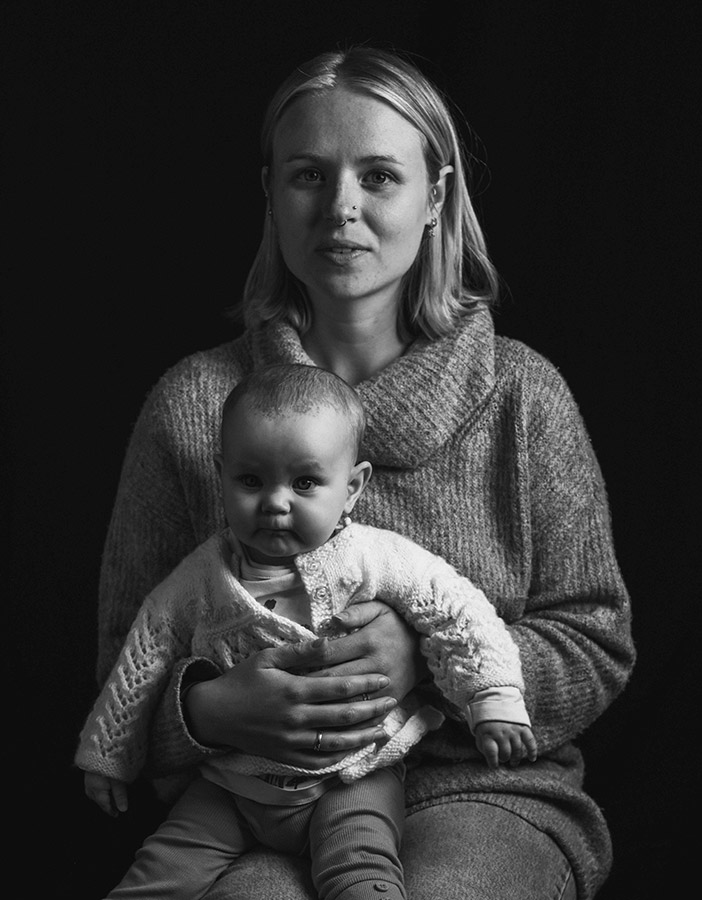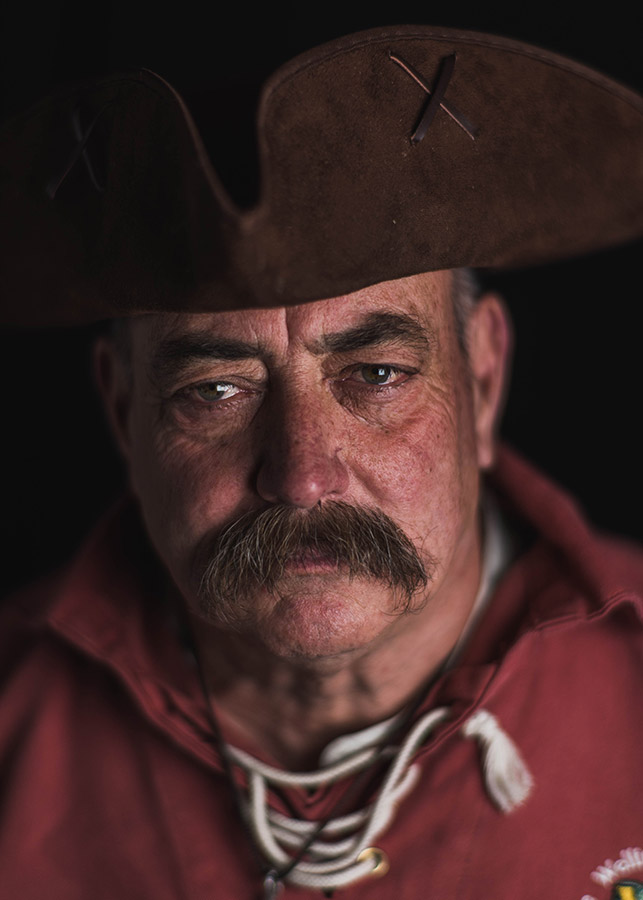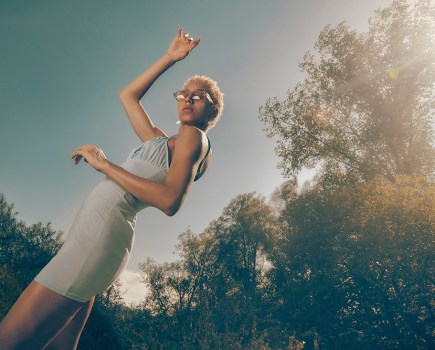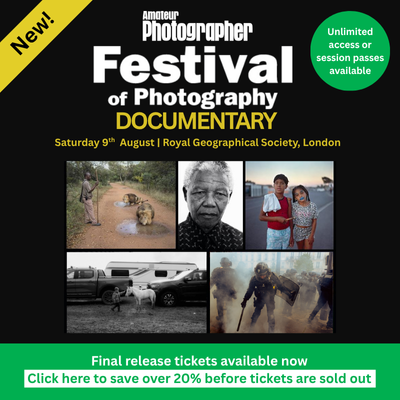Steve Fairclough speaks to three AP readers who each embarked on an ambitious and highly rewarding portrait photography project
Chris Porsz
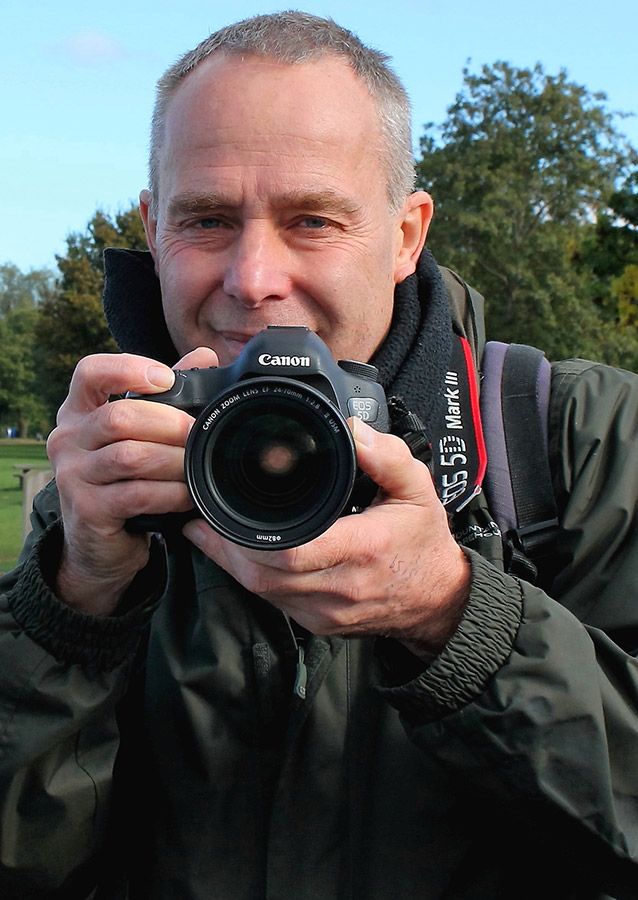
Chris Porsz began his interest in photography while hitchhiking across Europe and North Africa in the early 1970s. He started shooting images of people on the streets of Peterborough in the early 1980s. Years later this led to a newspaper column and an ambitious portrait project that saw him photographing the same people again, sometimes over 40 years apart. www.chrisporsz.com
Chris Porsz’s project dates back to the early 1980s when he ‘wandered around the streets of Peterborough with my camera’. But the arrival of children, and a busy career as a paramedic, put his photography on hold for almost 25 years.
He admits he, ‘sort of fell out of love with photography’, but his passion was rekindled in 2009 when he sent some old images of Peterborough in the 1980s to the local paper, the Peterborough Evening Telegraph. Chris reveals, ‘Amazingly, they loved them and they gave me a column – Paramedic Paparazzo.’
Some local people started recognising themselves in the published pictures and Chris had his ‘lightbulb moment’, when he asked himself ‘perhaps I can find them?’ That long search began in 2009. When possible, he photographed the people in the exact same location and pose he’d originally shot them in. ‘What got me going again was digital. The fact that you could instantly see your images and take as many as you want.’
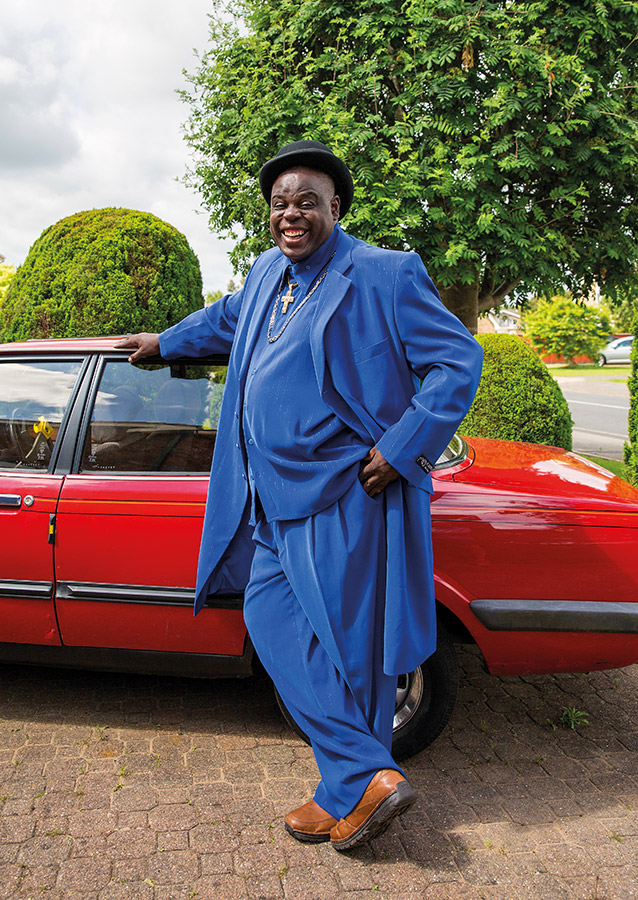
Paul Smith 41 years later in 2021, Smith, who is now a DJ on Peterborough Community Radio. Image: Chris Porsz
The work was published in the 2016 book Reunions, but that wasn’t the end of the matter… Chris decided to continue. After retiring as a paramedic in late 2020, he took the time to put together a second book – Reunions 2 – as the first book had left quite a few people still to be re-photographed. By this time his journey through cameras had taken him from a Kodak Instamatic camera to the Canon EOS 5D Mark III with a 24-70mm lens. He admits, ‘I also wanted to bring those 1980s mono pictures alive to a certain extent.’
For Reunions 2, Chris explains, ‘I went through my terrible filing system and I pulled out about 300 pictures; people I couldn’t find last time. People were very often reluctant and were camera shy; there was a lot of persuasion and cajoling.’

Former Thomas Cook CEO Bernard Norman waiting for a train at Peterborough railway station in 1981. Image: Chris Porsz
He eventually shot 168 Reunions for his second book and had to stop in order to get it published. ‘When I retired I had more time. It was 18-hour days at the computer. What kept me going was this unshakeable belief that this is important. I’m a great believer, like in photography, in seizing the moment.’
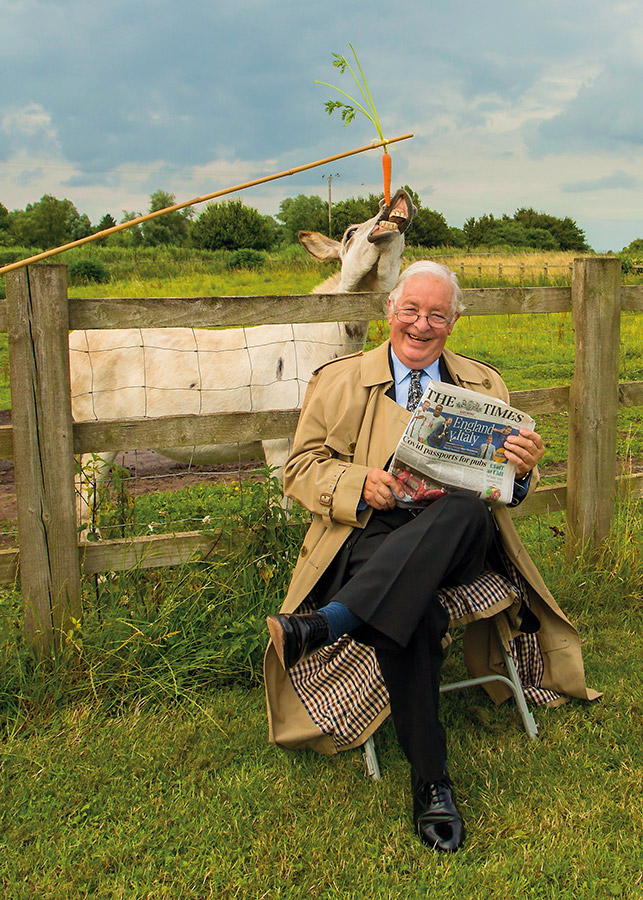
Former Thomas Cook CEO Bernard Norman 40 years later, a retired Norman with a real donkey. Image: Chris Porsz
Chris admits it was tricky to edit down the photographs. ‘It’s important to have a decent camera but it’s equally important to put the miles in, take lots of pictures, learn and to always have your camera with you at the right settings. I’m not very technical. I can do a bit of Photoshop. I’m not very good at it so I usually use the Canon Digital Professional software to edit.’
He has ended up with a unique look into Peterborough’s places and people over a 40-year-plus period. ‘There were 20 or 30 I would have liked to have shot again, that didn’t happen. On the whole, the successes made up for the disappointments.’

Mark Court, left, and his brother Matt eating chips in 1980 while their mother shopped in Bridge Street. Image: Chris Porsz
Chris’s portrait photography tips
- Try not to be a fair-weather photographer. Use a lens hood, as one drop of water on the lens will invariably end up in the middle of
a face. - Always carry your camera, and check it has charged batteries and extra memory cards. Keep checking all settings such as focus points, as they mysteriously get altered!
- Walk the miles to make your own luck and have the eye to not just look, but to see.
- Get your composition right. Use your legs as your zoom lens and move around the subject to achieve a good balance and to avoid any distracting elements. There’s no substitute for getting it right in-camera.
- Direct eye contact and chatting helps to relax the subject and allows you to capture a fleeting gesture that makes a stronger image.
- Wait for a character who stands out to walk on, or find another ‘stage’.
- Juxtapose a subject with funny adverts, newspapers or signage for a visual pun.
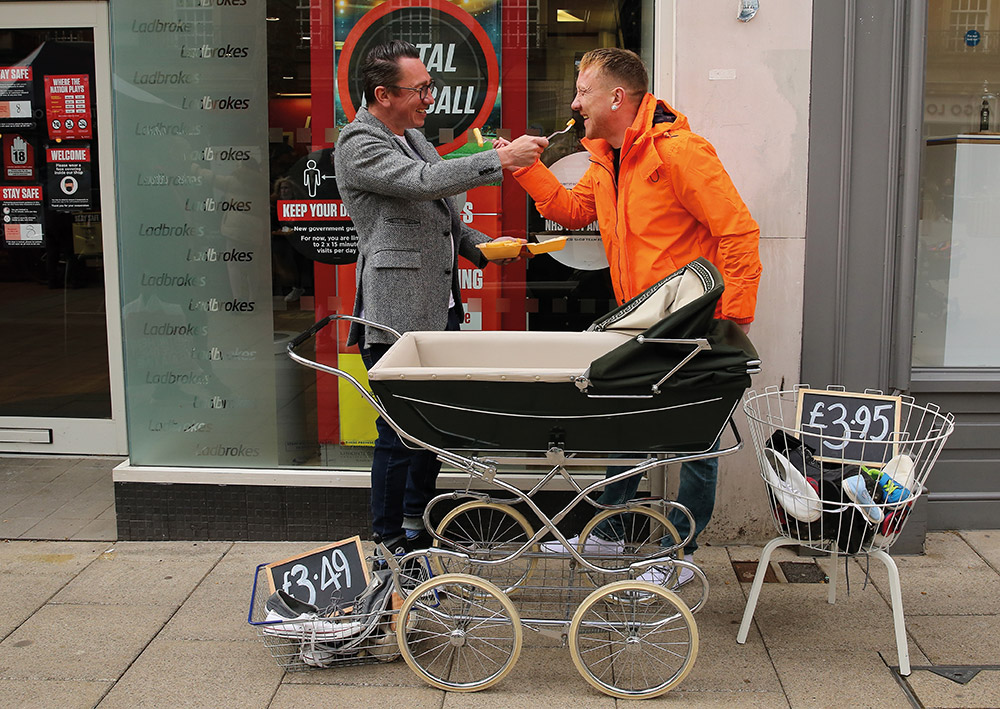
Mark Court, left, and his brother Matt pictured in April 2021. The brothers went to school with Chris Porsz’s children and now live in Birmingham. Image: Chris Porsz
You can read more about the Reunions portrait project here.
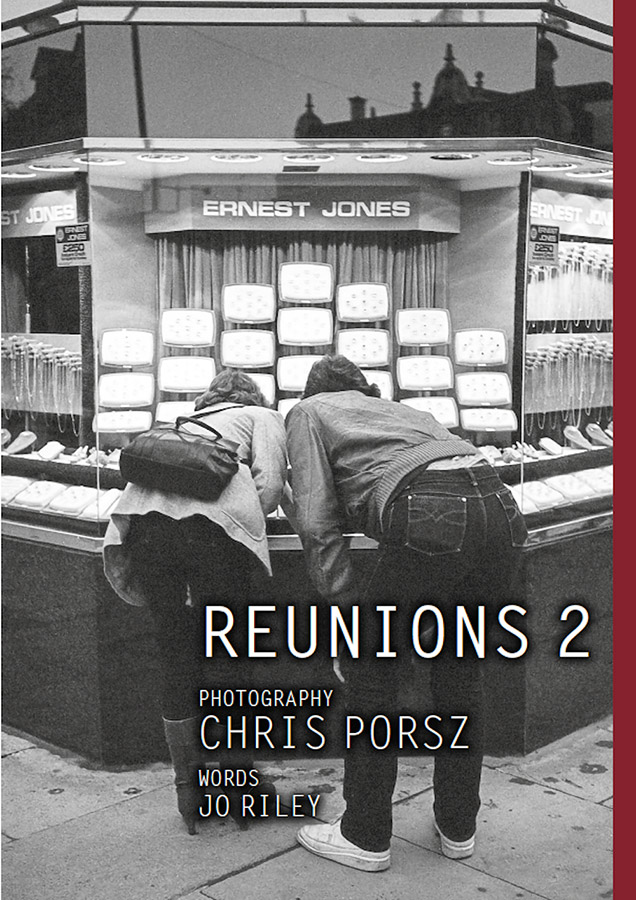
The book Reunions 2, by Chris Porsz, is published by Chris Porsz. (ISBN 978-0-9574329-6-3). www.chrisporsz.com
Anil Mistry

Anil Mistry is a creative director who has over 20 years of agency and client-side experience with strong conceptual, storytelling, visualisation and presentation skills. He specialises in developing campaigns, concepts and content in the experiential, retail, advertising, digital and immersive spaces. www.anilmistry.com
In 2007, Anil Mistry moved from London to the Sussex seaside town of Shoreham – it was this move that eventually led him to his Pub Portrait Project. He recalls, ‘I started to explore my local pubs. Being freelance, you end up with spare time, so I started wandering around and ended up in this place – The Duke of Wellington. I took to the place. It just had a very different atmosphere to all the other pubs in town, less frosty, and they were really nice people.’
At that time Anil ‘was always carrying a film camera around.’ He started to shoot people he’d met in the pub over a period of about three or four years. He collected a set of photographs and decided to make a book about it, The Welly. However, he explains, ‘I realised that all these shots were documentary and very candid. I thought it would be nice to have something that was more iconic… actual staged portraits of some of the key players in the pub.’
So in April 2017, he set up a camera on the stage in the pub and organised a day where people could come along and the regulars could have their portraits taken for a book. Five years later, a ‘Facebook memory’ triggered Anil to revisit the idea.
‘I had much better kit and my work had moved on. I thought I’d like to do it again and maybe make a book of it. The shoot was in April 2022 and over the course of six hours I took 53 portraits. It was a bit more of an event. Through photography, it was bringing the community together and making a record of this pub with a real charm and character, which is known for its real ales and its history.’
Again, Anil shot the people on the stage in the pub, but this time he planned it more meticulously and made sure everyone signed model release forms. ‘We started promoting it about three weeks before the event. In the run-up, I was practising at home and just trying to work out what my approach would be. I had to do a lot of planning and make sure I had everything ready to just go when I rocked up.’
In the end, Anil went with what his calls, ‘Rembrandt lighting. Really simple but really nice, shaped lighting that felt right in a pub because there’s a sense of tradition about it. I set up a black backdrop behind the people.’ He lit the subjects with a Godox SL200 LED light with a softbox, to mimic the window light on one side, and a reflector set up on the other side ‘to just push a bit of light back in.’
He used a Nikon D850 with a Sigma 50mm f/1.4 Art lens ‘for my wider, sort of bigger shots.’ Anil also had a Nikon D750 with a Zeiss Planar 85mm f/1.4 manual lens, and ‘shot most of the people on film as well – I think I was using Ilford Delta – using a Contax Aria SLR and Zeiss Planar 50mm f/1.4’. However, for the sake of consistency, he only used one film image in the ensuing book.
Tonal quality
Those who posed for Anil could see the results instantly as he tethered his main camera – the D850 – to his Mac laptop. The digital images were shot in raw as colour but Anil converted some of the portraits into black & white. ‘Sometimes you see someone who is fantastically wrinkly – that works so well in black & white. It becomes tonal; it’s about character and really looking at that landscape in their face. Also, sometimes, someone was wearing something that just looked horrible in colour. I didn’t want to have a book of constant colour portraits – you need to mix it up a bit.’
Anil also had an assistant, who made sure the names of those who were photographed were documented accurately, so Anil would later know who correlated with which frame numbered shot.
The resulting book, The Pub Portrait Project, includes all those who posed. ‘They were very classical portraits. It just made people feel grand and gave them a presence. It’s the opposite of the everyday selfie. Suddenly you’ve got something that’s deliberately quite serious, quite weighty.’
Anil’s portrait photography tips
- The best portraits come when you take charge. Direct your subjects, get them into poses you like, and let them know when you’ve got a
great shot to encourage them. - Use good equipment. For me, having good glass is everything. Find the right lens; the quality lens that you enjoy working with. Find its sweet spot and its idiosyncrasies that work with or against you.
- If shooting someone’s face, look for that highlight in the closest eye and focus on it. You’ve got the start point of the portrait; not that every portrait has to be in focus, of course.
- Get up and move around. Once I’ve got the main shot I will get people to move and try lots of angles and elevations, and just get as adventurous as I can with them because that’s when you get interesting work that feels non-conventional.
- Keep them in mind. Be conscious of your subject being a human being and really work with them to relax, so you’ll get a lot more out of it.
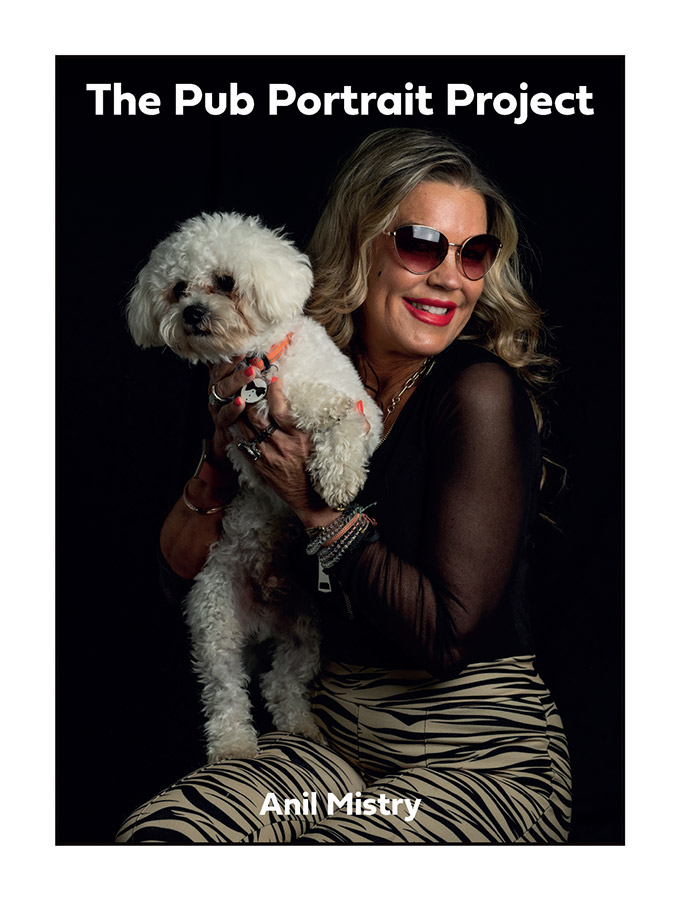
The book The Pub Portrait Project, by Anil Mistry, is published by Anil Mistry. anilmistryphoto.com
Rick Corbishley
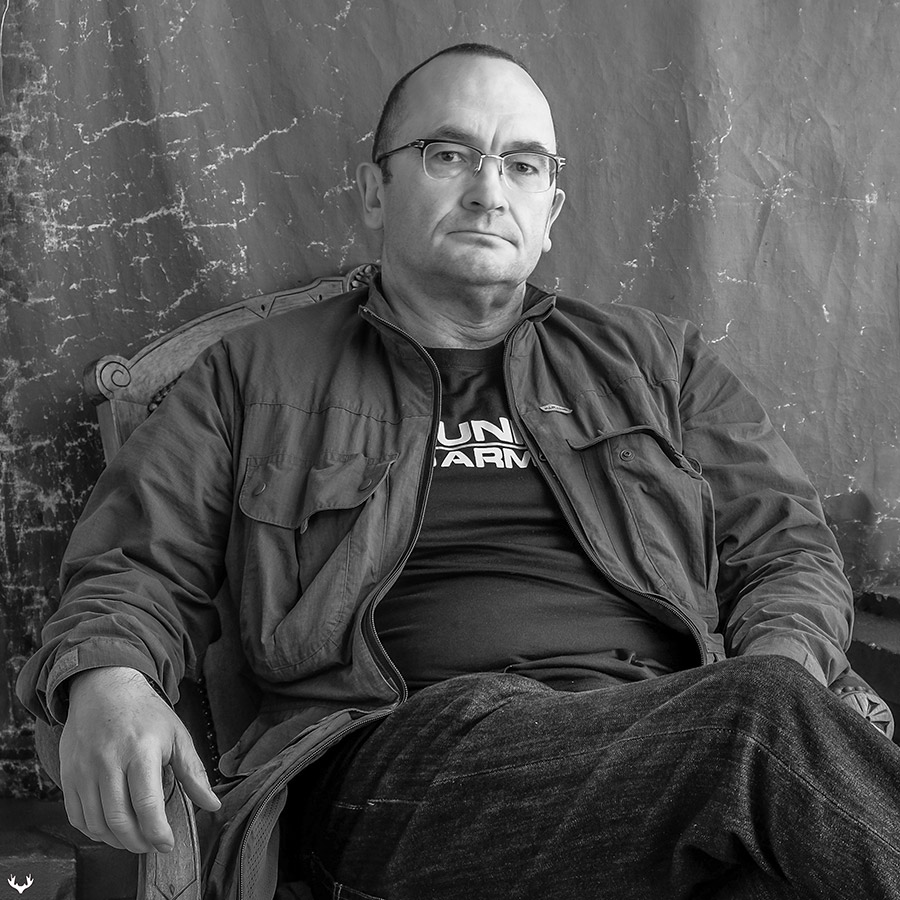
Originally from Manchester, Rick Corbishley has a background in building but changed career to become an ambulance dispatcher, then later a dispatcher of volunteers for the Yorkshire Ambulance Service. Recently retired, he is a keen street and portrait photographer in his spare time. www.mhbphoto.uk
Rick Corbishley’s new portrait book, Ordinary People Who Do Something Extraordinary, came out of his work life. He retired in July but, prior to that, for over 12 years he worked as a dispatcher of volunteers for the Yorkshire Ambulance Service. Rick explains, ‘There are about a thousand Community First Responders who’ll go out with a defibrillator, oxygen, first aid… essentially, it’s to keep people alive until the paramedics arrive.’
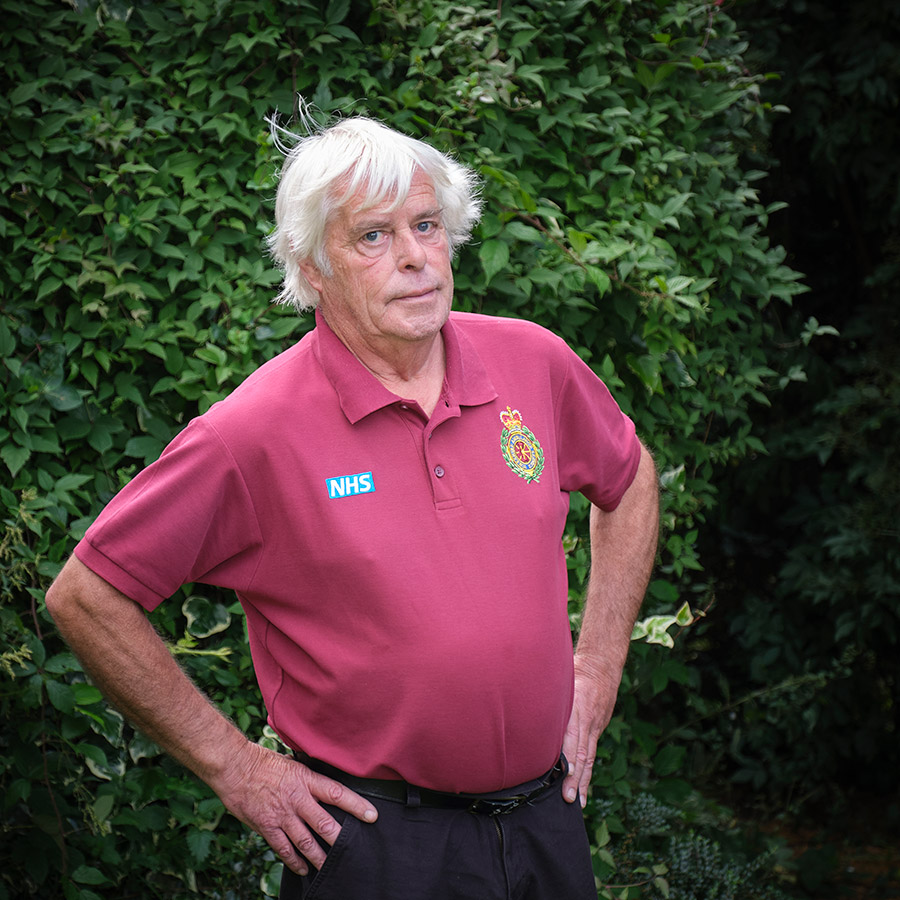
Adrian Grimshaw, Community First Responder. Office equipment engineer, former football referee, plays golf, has five children and nine grandchildren. Enjoys watching and feeding the squirrels and birds. Image: Rick Corbishley
Rick combined his love of photography with shooting their annual awards events – where people would win awards such as Responder of the Year or Team of the Year. But these events came to a grinding halt during the Covid lockdowns. Then a Christmas present from his wife, of the book Portrait of Britain, sparked an idea. ‘I thought I could do something of a similar quality where we could feature these volunteers and give them that bit of recognition which we’re not doing with an [awards] event. It’s something they can keep and I hope it will be motivational as, certainly, those in it are. These are ordinary folks just like me. It doesn’t take any special skills. Anybody can do it. So, that prompted it all.’
The book idea was pitched to his then employers, the Yorkshire Ambulance Service, in January 2021. ‘Because of the preparation involved – I had no idea how much when I set out – I wasn’t able to go out and meet people and photograph until August 2021. I then photographed on most of my days off until the end of March this year.’

Chris Fairley, Community First Responder. Jack-of-all-trades including ‘builder, caterer, massage therapist, engineer, event organiser, skip rat, tosher, salvager, up-cycler and eBayer.’ Built his own video and photographic studio from largely recycled material. Image: Rick Corbishley
Rick travelled over 4,000 miles around Yorkshire doing his shoots, with the idea that those being photographed would appear in natural surroundings. ‘They might be a gardener, and I’d get them in their garden, or they might be a football fan in their kit. I went out to their home or somewhere nearby that meant something to them.’
The scope of the project was widened to include not just Community First Responders but also Patient Transport Volunteer Drivers. From about 1,300 ‘possibles’, he ended up shooting 110 people. He shot it all with his Fujifilm X-T3 and X-T4 cameras with 16-55mm and 50-140mm zooms and a 35mm f/1.4 prime. He also used a couple of Viltrox prime lenses – an 18mm and a 56mm. Though he prefers natural light Rick reveals, ‘Occasionally I needed flash when we were indoors or the light was crap. I used a couple of the Godox V1 roundheads, when I needed to.’

John Moorhouse, Community First Responder. Toolmaker for engineering company, keen walker and cyclist, passionate about cricket. Once opened the batting for England against Australia (supporters’ team). Image: Rick Corbishley
Rick shot ‘a minimum of 20 per shoot, maybe up to 50, just because of the circumstances and trying to get something just right.’ He did all his post-production in Capture One, working on five to ten images from each shoot. He then cut it down to one per person, and shared the results with his subjects prior to publication. Only one asked for an image to be changed – as they felt they were more ‘boring’ than the original wacky image portrayed.
The result is a mixture of black & white and colour portraits that show, on the face of it, very ordinary people. The book had to be out before Rick retired but also it had to be printed to meet the deadline for Volunteers Week in June, as this was Yorkshire Ambulance’s official contribution to Volunteers Week.

Allison Green, Community First Responder. Professor, biomedical researcher at Yale, Cambridge and York; horse-rider, hiker, swimmer, cook and baker. Wants to give something back. Image: Rick Corbishley
‘I think there are some things that I’ve taken away that I’d probably change but, overall, I’ve come away with an experience I’ve never had before and may or may not get again. Anybody who’s a bit stale or comfortable should try something different and challenging. I’ve learnt every step of the way. My photographic arsenal is bigger than it was when I started this.
‘The book title says it all… these are ordinary people who do something extraordinary. They may not be an actual superhero but, when you experience a loved one in cardiac arrest being given life-saving CPR by one of these special people, who would say they’re not superheroes?’

Janet Long, Community First Responder. Professional musician, principal percussionist for Manchester Camerata. Awarded the prestigious Salomon Prize by the Royal Philharmonic Society. 111 call-taker and keen volunteer. Image: Rick Corbishley
Rick’s portrait photography tips
- It’s very important to communicate – there are a range of ways to build up a relationship. I’d never met most of the people I went to photograph. It was about building up a rapport. Create a very relaxed environment and you get a natural portrait.
- Know your kit. I feel under pressure when I’m working with somebody. I’m taking up their time and I don’t want to keep them waiting unnecessarily when I’m messing around trying to work out what the hell I’m doing. So I made sure I was well prepared when I turned up.
- I’ve not got the skills to take one shot and walk away. I work at it and I work the angles, the backgrounds and the locations to come away with a range of shots. Therefore when I do sit in front of the editing screen I’ve covered those angles, and if something doesn’t work I’ve got something else to fall back on. It makes a difference.
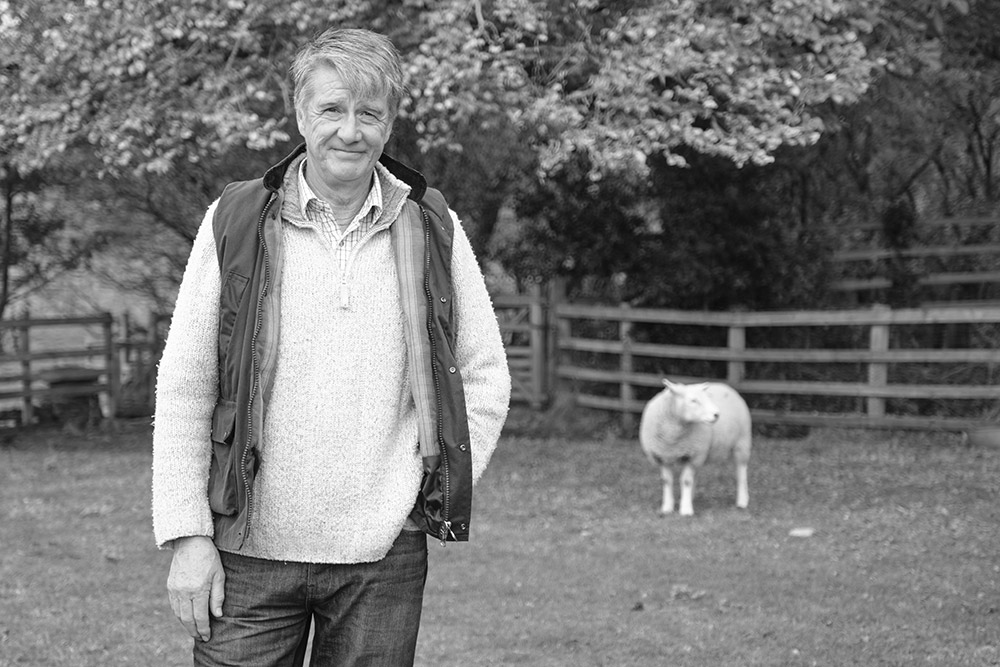
David Turner, Community First Responder. Mechanical engineer, IT director, former merchant navy seaman, nuclear submarine research and development, Land Rover and DIY enthusiast. Image: Rick Corbishley
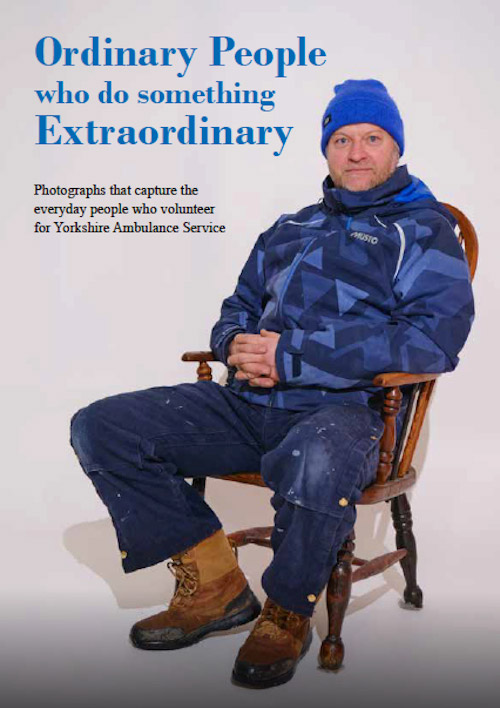
Ordinary People Who Do Something Extraordinary, by Rick Corbishley, is published by Yorkshire Ambulance Service with a suggested donation of £12.50. www.justgiving.com/fundraising/something-extraordinary
Portrait project by Arteh Odjidja: Fear & Dreams, The Stranger Series
Need advice on how to create a successful project or photography portfolio? Check this out.
Top tips for black and white portrait photography

